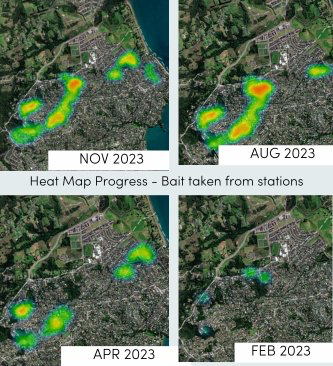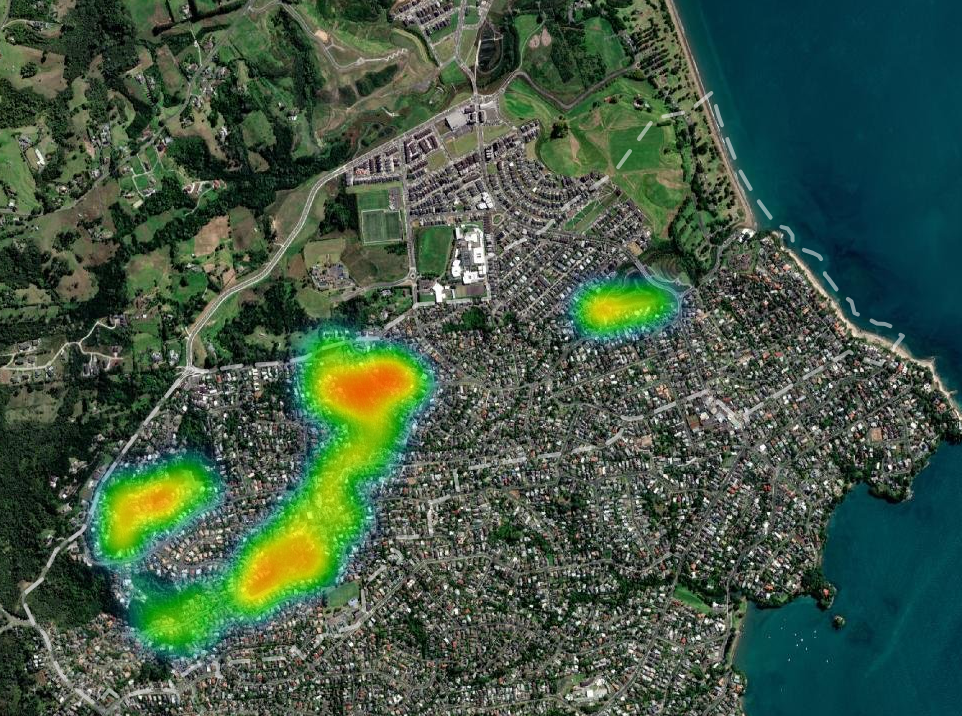Protecting Awaruku’s Ecological Gems: Volunteer Opportunities in Predator Control Project
Restore Hibiscus & Bays, with the support of the Hibiscus & Bays Local Board, is calling on neighbours to get together to protect our local ecosystem in the Long Bay-Awaruku catchment area. Awaruku Bush Reserve, is a precious gem in Torbay, which boasts magnificent trees, including 600-year-old kahikatea and pūriri. For those of you that have never been, it is a great spot for bird watching during the day, and sneaking up on glow worms at night.
Our priority is to carry out predator control in this area to protect this forest. Since our launch in February last year, the community efforts have yielded significant results: trapping 55 possums and 41 rats, with over 6 kg of bait consumed in our April pulse. Thanks to our amazing volunteers, we’ve expanded from 7 to 21 active lines, with 92 traps and 176 bait stations in place.
Although we have 20 dedicated volunteers, we are eager to welcome more to assist with the backyard predator control lines and predator monitoring. With consent for approximately 25 new lines in Awaruku, passionate volunteers are desperately needed to help manage them. Decreasing these predators allows our native plants and animals to flourish, and we are starting to see evidence of this, as you will see later in the Panui.
Our Restoration Advisor, Simon van den Berg, mapped out predator control lines using GIS and established neighbourhood clusters to make the lines efficient for volunteers to service for the four bait pulses per year.
Now is an excellent time to get involved, as our next bait pulse is in August. If you’re keen to contribute to your community, help look after the local environment and habitat restoration, assist with pest control, and meet new people, volunteering with us on this project would be a great opportunity.
Using pulsing, we target predators at strategic intervals, effectively controlling rats, possums, and mustelids. Pulsing takes place four times a year, aligning with the breeding times of rats and native birds.
Keen to be involved? Volunteers commit 1 hour per week for 4 weeks, four times a year (February, April, August, and November). This coincides with peak breeding and native fruiting seasons. For those hesitant about handling traps or poison, there’s an alternative: assisting with monitoring tool placement and collection twice a year (August-September and April-May), a week-long commitment. This helps track project effectiveness and monitor native species recovery.
Join us in preserving Awaruku’s ecosystem! Full training and equipment are provided, as well as ongoing support.
To find out more, visit the Restore Hibiscus & Bays website or email Simon van den Berg at simon@restorehb.org.nz.

